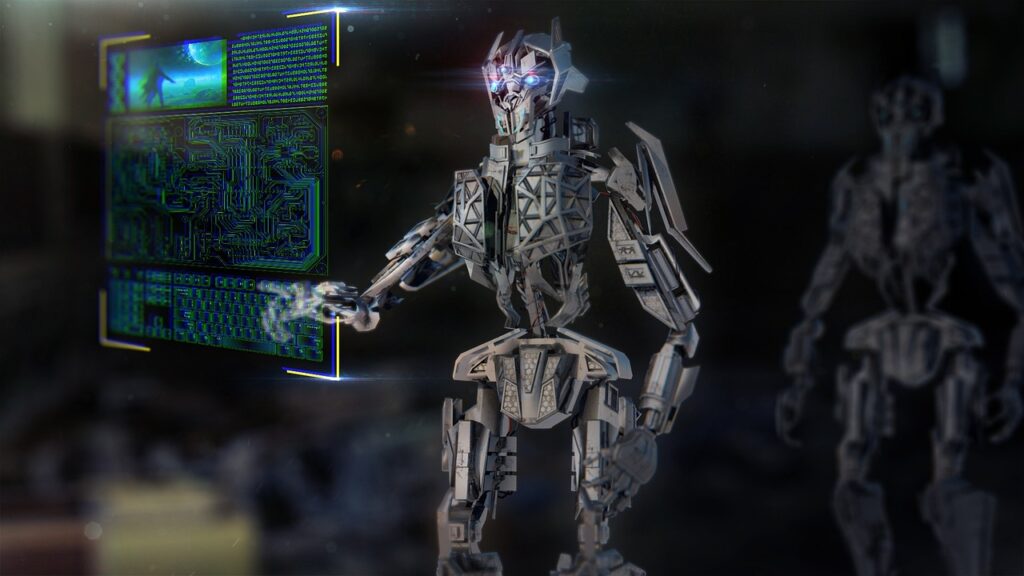
Artificial Intelligence (AI) has been a game-changer in many industries, and mechanical engineering is no exception. The field of mechanical engineering is currently facing several challenges, such as designing systems and components that are sustainable and energy-efficient. The integration of AI and data analytics into mechanical engineering can help address these challenges, leading to innovative solutions and improved efficiency.
AI has made significant strides in various areas, including autonomous vehicles. However, its application in mechanical engineering, particularly in the design phase, is equally noteworthy. A prime example of this is the use of machine learning algorithms by Neural Concept in collaborative scenarios.
The envisioned collaboration scenario involves AI turnkey solutions originating from data analysis by data scientists and expert engineers proficient in programming languages and AI algorithms. On the other hand, most mechanical engineers would prefer to leverage AI solutions while focusing on their areas of expertise, such as factory automation, material synthesis, and product design, including Computer-Aided Design (CAD).
AI and Data Science have become increasingly relevant for mechanical engineers, with emerging applications of Deep Learning in 3D simulation. To understand this better, let’s delve into the challenges faced by modern mechanical engineering and how AI can help overcome them.
Challenges Faced By Modern Mechanical Engineering and How AI Can Help to Overcome?
Mechanical engineering today is under pressure from multiple angles. Engineers are tasked with creating innovative products and processes while ensuring that designs are sustainable and cost-effective. They are also responsible for reducing waste and increasing efficiency. Furthermore, they must deliver energy-efficient products and processes that utilize renewable energy sources.
In addition to these challenges, engineers face competition from other companies and the pressure to increase profitability for shareholders. This requires them to reduce costs and increase efficiency and productivity while maintaining or improving product quality. Lastly, engineers must stay updated with new technologies and incorporate them into their designs.
What is AI (Artificial Intelligence)
AI, a branch of computer engineering, focuses on making machines perform specialized tasks that usually require human intelligence, such as recognizing speech, understanding natural language, and learning from experience. AI can be built with software, hardware, or a combination of both. Examples of AI software include chatbots, virtual assistants, and image recognition programs, while hardware-based AI includes self-driving cars, drones, and robots.
AI has been around since the 1950s when researchers began exploring the idea of creating machines that can think and learn like humans. Over the decades, AI research evolved into Machine Learning, allowing machines to learn from data instead of being explicitly programmed. This led to more advanced AI capable of recognizing images and voices. The role of data science in AI is crucial as it provides the data and insights needed to train and improve AI models.
Machine Learning (ML) and Deep Learning (DL) are two branches of AI. ML involves algorithms that help computers learn from new data and past performance without human intervention. DL, on the other hand, is based on Artificial Neural Networks, mathematical models inspired by the human brain’s structure and function.
The design process for mechanical components involves analyzing a component’s function and performance requirements, determining its materials and manufacturing methods, and then creating detailed drawings and specifications for manufacturing. This process typically starts with conceptual design, followed by detailed design, and then goes through an analysis and optimization stage using CAD and 3D mechanical engineering simulation tools. This is where AI can play a significant role, particularly in multi-objective optimization.
Application of AI
- AI has been successfully applied in several use cases in mechanical engineering. For instance, Neural Concept’s Deep Learning algorithm has been used to create AI-driven simulations that replace numerical approximations with neural network predictions. These simulations are based on data from previous numerical analyses and deliver results thousands or even millions of times faster.
- One such use case is the Turbomachinery Explorer, where AI is used to create quasi-real-time performance maps and design space exploration for complex turbomachines. This significantly speeds up the design process and allows for evaluation under specific operating conditions.
- In another example, a team of scientists and engineers from PhysicsX collaborated with Neural Concept to build an AI predictive model for heat exchanger designs. The model could predict the performance of various heat exchanger designs in real-time, enabling the optimization of the heat exchanger shape.
- AI has also been applied to optimize the 3D shape of a boat for a race, demonstrating its applicability to complex hydrodynamics problems. This methodology could potentially be applied to other similar problems.
Conclusion
In conclusion, the combination of mechanical engineering and artificial intelligence holds immense potential. The integration of AI into mechanical engineering is expected to lead to the design of new, innovative products. As AI continues to evolve, its applications in mechanical engineering are likely to expand, offering even more opportunities for innovation and efficiency.




